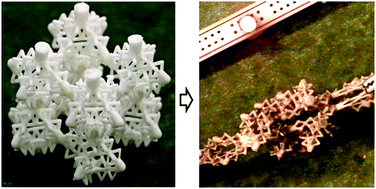Stretchable 3D lattice conductors†
Abstract
3D architectures have been long harnessed to create lightweight yet strong cellular materials; however, the study regarding how 3D architectures facilitate the design of soft materials is at the incipient stage. Here, we demonstrate that 3D architectures can greatly facilitate the design of an intrinsically stretchable lattice conductor. We show that 3D architectures can be harnessed to enhance the overall stretchability of the soft conductors, reduce the effective density, enable resistive sensing of the large deformation of curved solids, and improve monitoring of a wastewater stream. Theoretical models are developed to understand the mechanical and conductive behaviors of the lattice conductor. We expect this type of lattice conductors can potentially inspire various designs of 3D-architected electronics for diverse applications from healthcare devices to soft robotics.



 Please wait while we load your content...
Please wait while we load your content...